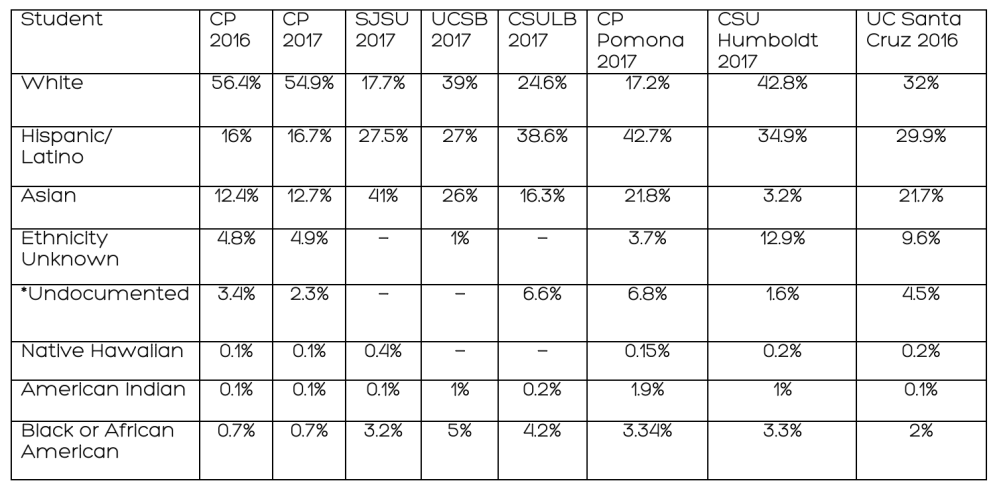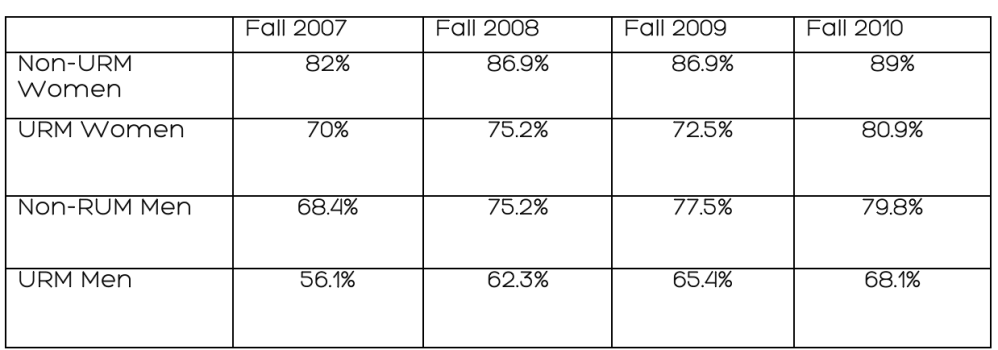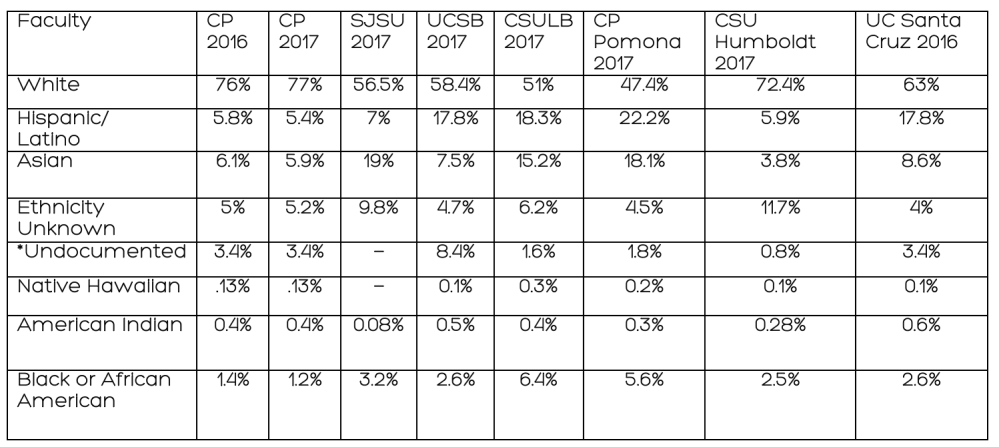Privilege. What do you first think of when you see the word? Do you shrink back? Do you begin listing all the reasons you are not privileged? Perhaps even close this article? Well, the truth is, we all have privilege and it isn’t necessarily a bad thing. Privilege, by definition, is a right or immunity granted as a particular benefit or advantage. So why is it that people get so thrown off when we discuss our privileges?
Within privilege, there is a multitude of different ways one can be privileged, such as male privilege, economic privilege, or even religious privilege explained Dr. Jennifer Teramoto Pedrotti the Associate Dean for Diversity and Curriculum in the College of Liberal Arts. The most common one used today is based on race, known as white privilege.
In order to help students, understand privilege in a positive way, Pedrotti relates it to her PhD; although she did everything to earn it, she was able to start planning for it at a young age because her father had earned one as well so she knew the process better than someone from a family without the same knowledge. “I think sometimes if white students can think about privilege in that way, you know, you don’t earn being born white, right? But it doesn’t mean you don’t earn anything. You can still be a hard worker.”
White privilege has worked in my own life. In run-ins with police, I am given the benefit of the doubt because of my light skin. People of color aren’t always treated as such. Increased amounts of harassment are unfortunately, not unusual for people of color.
In a 2005 study, of those who reported the police using force or threats against them, 4.4 percent were black and 2.3 percent were Hispanic, while only 1.2 percent were white. Although the difference in percent may appear incidental, the reality is that blacks experienced force or threats almost four times as frequently as whites.
White privilege presence is society is undeniable, but how does it work on Cal Poly’s campus? Hopefully, you are not completely oblivious to Cal Poly’s ongoing struggle with racism and white privilege, but if you are, or even doubting its prevalence, here are the facts.
Of the six CSU’s and UC schools I researched (listed below), Cal Poly has the most white student population, at 54.9 percent in 2017, which is more than 10 percent higher than any other schools. Runner up is CSU Humboldt which has 42.8 percent white students in 2017. After that is UC Santa Barbara at 39 percent (2017), UC Santa Cruz at 32 percent (2016), CSU Long Beach at 24.6 percent (2016), then San Jose State University at 17.7 percent (2017), and finally Cal Poly Pomona at 17.2 percent (2017).

Since more than half our school is white, why might that matter? It is clear campus demographics play a big role in student success. Whether you are a minority or not, if you came from a diverse community, adjusting to the lack of diversity in SLO is just one more obstacle for a new student to face, and an issue that may impact their entire journey on campus. This is especially true when it comes to the toll it takes on minority students. The data shows that it effects graduation rates.

It is hard enough finding your group or niche while entering college, but an additional burden is thrown on the shoulders of minority students. Luckily Cal Poly does have programs in place to help support minority students, such as the Black Student Union, whose mission is to “Increase the retention and graduation rates of Black Students on campus.”
Not only do their peers lack diversity, minority students also have to cope with the lack of diversity amongst faculty at Cal Poly. In 2017, Cal Poly’s faculty was 77 percent white, with all of the other minority groups (Hispanic/ Latinx, Asian, Undocumented, Native Hawaiian, American Indian, and Black or African American) making up less than a quarter of members. When students are able to relate to their faculty members, it helps “provide stronger role models.”

With the lack of diversity in Cal Poly’s faculty, instructors are trying to increase their own knowledge base concerning diversity. Pedrotti notes that she believes Cal Poly faculty members are different: they come here because they like students and want them to succeed. When professors see their students are hurting, they want to do what they can to help, states Pedrotti—
“I see our faculty attending trainings for UndocuAlly, or for accessibility, in terms of how to design your syllabus and things like that. I see our faculty joining our diversity resource roundtables where they’re learning how to add more inclusive teaching strategies.”
The College of Liberal Arts has already been especially proactive. For the past two years, new applicants are required to submit a diversity and inclusivity statement to make certain those professors coming in have a background in cultural competency and inclusive teaching. “The bottom line is that good teaching is inclusive teaching,” says Pedrotti.
Other universities are in the process of appointing Associate Deans for Diversity and Curriculum or are creating other programs such as COSAM’s Committee for Inclusion and Equity created in Spring 2018.
Granting all this, without action from the students, change is unlikely. Action from students of minority groups is vital, but it is the action of the other 77 percent of students that matters just as much. We must all stand together in our resolve to see things change.
How can you use your white privilege? Begin by being an active bystander. Hold other students accountable and speak up when something isn’t okay. Microaggressions can be nipped in the bud, by a gentle reminder that what was said is hurtful and not kind.
Pedrotti reflected on her own life, explaining that in college, since she is a minority, she wasn’t in groups where racist jokes or comments would come up, whereas her husband whose is white, was. Maybe it was because people felt more comfortable sharing a racist joke with a fellow whitie, rather than Pedrotti, a minority. “He had to become a really strong ally in those moments and say, ‘Yeah I don’t agree with that’ or ‘That’s different than what I think.’” Having a friend of the same race as the active bystander can sometimes be more influential, she explained.
White students need to be aware and recognize their impact even if it may be different from their intent. This year, all incoming students went through impact vs. intent training during the Week of Welcome, but for those of you who didn’t, here’s an explanation. Intent is how you hope the other person interprets what you say, but the impact is how it is taken. When a student says “I don’t see color,” the intent may be to say you aren’t racist, but since color does exist and it is not going anywhere, the impact of that statement devalues the experiences of someone who has been discriminated against.
Participation from white students doesn’t need to end there. Be proactive in seeking opportunities to grow their knowledge of minority groups. During the Week of Welcome and SLO Days, optional presentations were presented such as UndocuAlly: Supporting Undocumented Students or Diversity and Inclusivity on our campus. I was lucky enough to attend those presentations, but I also noticed the lack of turn out from white students who could benefit from such events.
At the UndocuAlly presentation during SLO Days, I attended with one other student. The presenter explained that they were the first student to come out of three previous sessions of 500 students in each session. At the three optional presentations about Diversity and Inclusivity during WoW, approximately 60 students attended, out of the whole incoming class. Shocking, but true.
One of the opportunities for all Cal Poly students and faculty is training to learn how to become an ally for minority students. Trainings are offered through the Cal Poly DREAM Center every quarter. After this training, although you will be considered an Ally, it is key to remember that Ally is a verb, not a noun. For more tips about being an active ally, watch the short video below:
In spite of the discouraging numbers and facts about our university, it is essential we not lose hope. White students need to stand up and behind minority students. White students need to “treat [others] in a way that they feel valued and comfortable,” said Pedrotti.
During the Diversity and Inclusivity presentation, an incoming student named John, who is African American, said “If you are not with us, you are against us.” When I heard this, I thought he was being overly dramatic, but then I remembered, this is his reality.
White students can find themselves paralyzed by a fear of doing the wrong thing, or find it simply easier o avoid the topic at all, but we mustn’t. Backing down, or choosing to take on the issue only when it is safe or convenient is no longer an option. We must stand up for our fellow Mustangs and not just when an act is so untenable that we are outraged. Injustice is a battle we must all fight every day.
Research for charts:
SJSU Faculty: http://www.iea.sjsu.edu/cognos/cgi-bin/cognos.cgi
Cal Poly Students: https://ir.calpoly.edu/2017-enrollment-all-students
Cal Poly Faculty: https://ir.calpoly.edu/2017-total-faculty-profile
Cal poly graduation underrepresented minority groups https://content-calpoly-edu.s3.amazonaws.com/ir/1/images/Student_Achievement/CalPoly%20Gender%20GAP%20URM%20Graduation%20Rates.pdf
Featured Image: from WikiCommons by Elvert Barnes